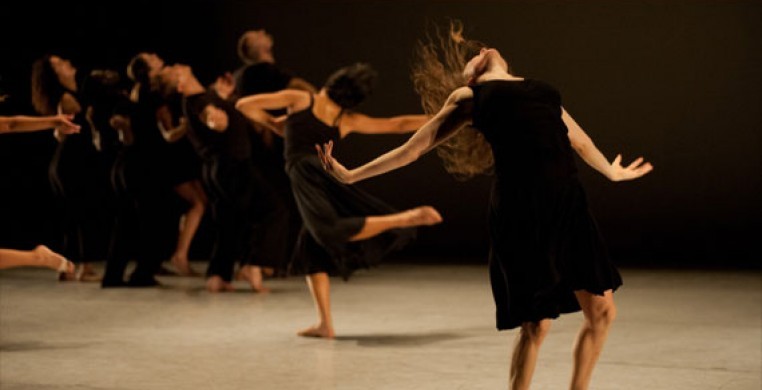Junior is an orphan, a romantic, a homosexual. Junior is also a compulsive texter, one of the central themes of L.A.-based choreographer David Roussève’s Stardust, a dance-theater piece described as a “coming-of-age story for the Twitter age.” The final performance takes place tonight at the Dance Center of Columbia College.
What’s important to know about Roussève’s tragic figure, Junior, a gay African American urban teenager who obsesses in one-way conversations of short-lived text messages, is that he never appears in the 80-minute melodrama. The audience learns of him through projected texts (“Maybe you be my BFF?”) and several Skype sessions with the good-natured “granpa,” a soft-spoken caricature who provides cautionary wisdom as Junior faces a slew of overwrought problems: conflicts at school and two encounters of sexual abuse—one of which proves deadly—to name some. “Righteousness” is a favorite noun of the beloved granpa, whose presence serves as a type of guardian angel and omniscient purveyor.
To put it mildly, Junior’s world is complicated. To alleviate his problems, he engages in dialogue via text, supposedly directed at random people and even the Man on High. He questions, among other things, his race and sexuality (“why you make me fag, god?????”). When God doesn’t respond, Junior counts the Internet as his new “god,” a place of refuge in a world with no answers (“dear internet land: you my only god now”). But not receiving answers may be what Junior enjoys most, a type of therapy that doesn’t bite back. Stardust excels, if anything, in its irony.
Roussève’s core of 10 dancers, often drifting against the soft melodies of Nat King Cole (who we learn is a favorite of Junior’s), Johnny Mathis and Ella Fitzgerald, try to bring this unstable world to life. As with the texts, they are anonymous, interchangeable representations of Junior’s psyche—a gesticulating dance-off, a crotch-grab, a well-intentioned but shy flirtation between two male dancers.
These and other moments have small, quirky appeals. Roussève 's company, REALITY—a diverse crop of movers in size, race, and technique—often function like a Greek chorus made up of high school outcasts, a collective voice in the scope of it all. They provide substance through voluminous movement phrases and the occasional spurt of dialogue, as is the case with a deadpan reciting of Sir Mix-A-Lot’s “Baby Got Back” by the adroit Kevin Williamson. The chorus is the pseudo key to unlocking the mysteries of Stardust’s enigmatic, digitally-preoccupied protagonist.
Proving difficult, however, is trusting how much Junior encompasses today’s Twitter-prone world. Roussève would have you believe that such a character is the product of the digital age. In actuality, he’s more like the product of vague generalities and tragedies compounded to the max—no friends, no faith, no love, no identity. It skirts too close to cliché territory. As a result, the piece tends to falter in its aspirations; Roussève’s vision of Junior feels like a forced development and Stardust, for all its ambition, still appears to be coming-of-age.
Matthew de la Peña

